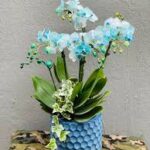Money Cat and the Artistry of Traditional Japanese Culture
Exploring the Harmony of Money Cat in Japanese Traditional Arts:

In the vibrant tapestry of Japanese culture, Money Cat or “Maneki-neko” emerges not only as a symbol of prosperity but also as an artistic muse that weaves its charm through various traditional art forms. This article embarks on a cultural journey, delving into the intricate connections between Money Cat and the rich artistic heritage of Japan.
1. The Origin of Maneki-neko:
Maneki-neko, with its beckoning paw and cheerful countenance, originated in Japan during the Edo period. Its roots are entwined with folklore, spirituality, and the profound symbolism of inviting good fortune and wealth.
2. Calligraphy and Money Cat:
Japanese calligraphy, or “shodo,” finds a captivating muse in Money Cat. The characters for prosperity and good fortune, often featured in calligraphy, complement the symbolism of Maneki-neko, creating a harmonious blend of visual and written artistry.
3. Ikebana and Floral Harmony:
The art of flower arrangement, known as “ikebana,” seamlessly incorporates Money Cat into its compositions. The figure of the beckoning cat, surrounded by carefully selected flowers and branches, becomes a symbol of prosperity in a living, ephemeral artwork.
4. Traditional Ceramics and Sculptures:
Artisans in Japan channel their creativity into crafting Money Cat sculptures from traditional ceramics. These sculptures, adorned with vibrant colors and intricate details, capture the essence of both cultural heritage and artistic expression.
5. Ukiyo-e Woodblock Prints:
The world of ukiyo-e, or woodblock prints, comes alive with the inclusion of Money Cat. Artists depict scenes of daily life where the iconic cat graces homes and businesses, providing a glimpse into the cultural landscape of Japan during different periods.
6. Noh and Kabuki Performances:
In traditional Japanese theater, Money Cat makes occasional appearances as a prop or symbol, enriching the narrative with its cultural significance. Noh and Kabuki performances showcase the adaptability of this iconic figure in diverse artistic realms.
7. Traditional Textile Arts:
Money Cat motifs find their way into traditional textile arts, such as kimono designs and fabric patterns. The interplay of colors and the symbolism of the cat contribute to the elegance and cultural depth of these artistic expressions.
8. Festivals and Cultural Celebrations:
During festivals and cultural celebrations, Money Cat takes center stage in processions and displays. Whether crafted as a papier-mâché float or featured in traditional dance performances, the cat’s presence becomes a festive embodiment of prosperity.
Conclusion:
Money Cat’s integration into traditional Japanese arts showcases the enduring influence of this cultural icon. From calligraphy to ceramics, theater to textiles, the beckoning cat weaves a thread of prosperity and charm through the artistic traditions of Japan. As an emblem of good fortune, Money Cat continues to inspire and enrich the cultural landscape, inviting both locals and global enthusiasts to appreciate the intersection of tradition and creativity in the Land of the Rising Sun.

